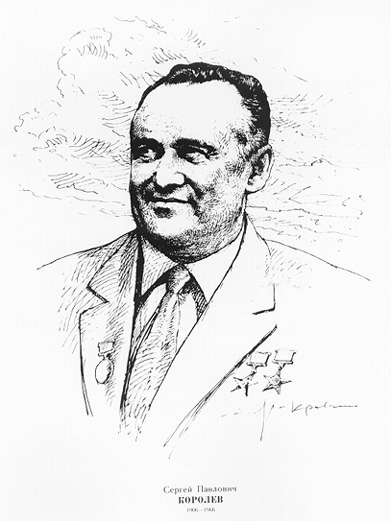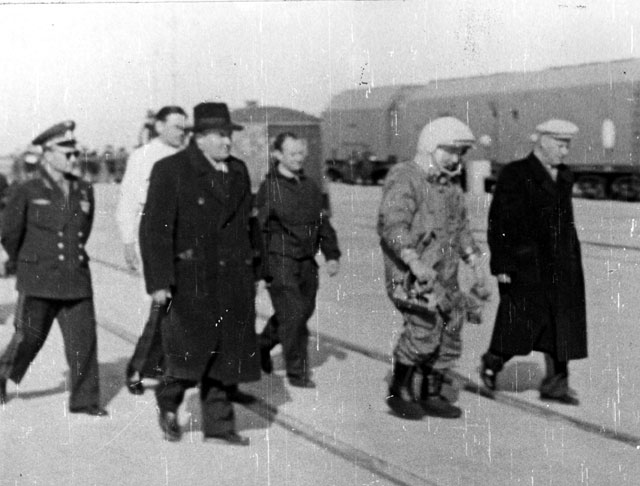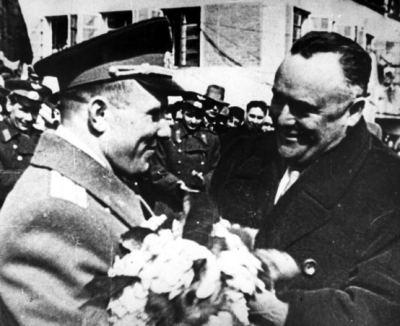Sergei Korolev: Architect of Soviet Space Program

Sergei Korolev is credited as being the founder of the Soviet Union's space program. During his tenure, the Soviet Union saw many space firsts. This included the first satellite, Sputnik (1957); the first human in space, Yuri Gagarin (1961); and Luna 9, the first spacecraft to achieve a soft landing on the moon (1966).
While his name is well-known today, during his lifetime Korolev's identity was kept a secret (as were many activities of the Soviet space program.) This was in contrast to NASA and the United States, which publicly broadcast its successes and failures to the world.
Early life
Korolev was born on Jan. 12, 1907, in Zhytomyr, Ukraine — just a few years after the first airplane flights took place. Many astronauts and spacecraft engineers of the 1950s and 1960s were born around the turn of the century, when spaceflight was often considered an impossible dream.
Korolev didn't waste any time in pursuing his passion for aviation. At 17, he created his first glider, according to the European Space Agency. He was educated at the Kiev Polytechnic Institute and the University of Moscow, where he began working on rocket propulsion (which was still a theoretical subject).
His work continued in 1931 when he created the Group for Investigation of Reactive Motion (GIRD), which created liquid-fueled rockets, ESA added. Liquid rockets have more flexibility than solid rockets because they can be turned on and off. Just two years after founding the group, the Soviet military took it over and renamed it RNII.
Then Korolev ran into bad times. The Soviet leader, Joseph Stalin, began persecuting his opponents under a program known as the Great Purge. A colleague of Korolev was arrested in March 1938, ESA said. The colleague, Valentin Glushko, mentioned Korolev's name to try to reduce his own charges. This led to Korolev's arrest in June, and he spent two years in various Soviet jails.

Starting the space program
Stalin, however, was in need of aeronautical engineers as World War II began. Korolev and other people like him were allowed to work from jail, according to NASA; Korolev was identified by Sergei Tupolev (a famous aircraft designer who was jailed himself), who asked for Korolev's help on his projects.
While still a political prisoner, Korolev was sent to Germany to inspect what was left of the Nazi regime's missile operations (after the United States had taken most of the best elements). Once Korolev was freed from jail after the war's end in 1945, he was put in charge of designing a Soviet equivalent of the V2 rocket. The result was the first intercontinental ballistic missile, known as the R7. Korolev's other work was put into a design bureau, the first of many that worked on Korolev's technology once he had developed it, according to NASA.
While few people remember the R7 today, everyone in the space world knows of Sputnik 1, which launched on Oct. 4, 1957, aboard an R7. This was the first human-made satellite, and it took the world by surprise because the Soviet Union was still considered by some to be technologically inferior.
The United States, which was already working on a satellite on its own for the International Geophysical Year, attempted to speed up its attempts to launch something into space. The first U.S. satellite, however, did not fly until January 1958.

The Space Race
Throughout the 1960s, the United States and the Soviet Union competed in space, with the Soviet Union at first taking a strong lead in terms of racking up space firsts. Yuri Gagarin was the first human to fly in space on April 12, 1961, while the United States launched its first astronaut, Alan Shepard, in early May.
The Soviet Union also accomplished the first spacewalk (by Alexei Leonov). Under Korolev, the country also did surveillance of the moon with Lunas 1, 2 and 3. This was important because both the United States and the Soviet Union were thinking about landing humans there as an ultimate proclamation of who was superior in space.
While the United States worked on its famed Saturn V rocket that eventually hefted Apollo 11 and its crew into Earth orbit in 1969 — on the way to landing on the moon – Korolev's team worked on the N-1 launch vehicle starting in 1962. The heavy-lift rocket stayed in development for a decade, but never had a successful flight; its launch attempts included a huge explosion in 1969.
Korolev himself, however, did not live to see humans land on the moon. In 1965 he was diagnosed with cancer, and he died on Jan. 14, 1966, during surgery on his colon. Two weeks later, Luna 9 landed on the moon.
Additional resource
Join our Space Forums to keep talking space on the latest missions, night sky and more! And if you have a news tip, correction or comment, let us know at: community@space.com.
Get the Space.com Newsletter
Breaking space news, the latest updates on rocket launches, skywatching events and more!

Elizabeth Howell (she/her), Ph.D., was a staff writer in the spaceflight channel between 2022 and 2024 specializing in Canadian space news. She was contributing writer for Space.com for 10 years from 2012 to 2024. Elizabeth's reporting includes multiple exclusives with the White House, leading world coverage about a lost-and-found space tomato on the International Space Station, witnessing five human spaceflight launches on two continents, flying parabolic, working inside a spacesuit, and participating in a simulated Mars mission. Her latest book, "Why Am I Taller?" (ECW Press, 2022) is co-written with astronaut Dave Williams.










